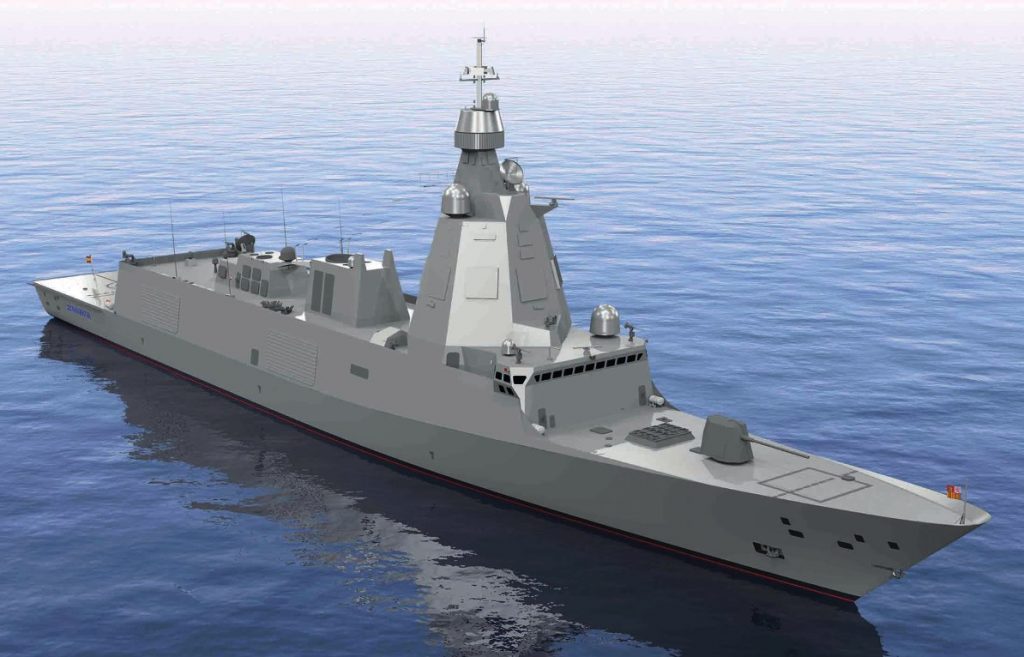U.S. Military Continues with Gaza Pier Construction
Despite relocating due to weather conditions, the U.S. Department of Defense is moving forward with plans to build a temporary pier for humanitarian aid delivery into Gaza, according to Pentagon...


The Spanish Navy’s forthcoming F110 frigates will be equipped with twin Kongsberg Kamewa CPP systems
By Tony Capaccio (Bloomberg) —
House and Senate defense lawmakers say the Navy’s new frigate program faces “significant risks” amid a surge in cost estimates for the next-generation vessel built by the American unit of Fincantieri SpA.
In language in the National Defense Authorization Act being voted on this week, lawmakers cited the need for “cost realism” in the frigate program and the potential risks involved in shifting to “predominantly U.S. component suppliers instead of the mainly foreign suppliers used in the parent vessel design.” They also flagged a complex propulsion drive train “that has not previously been used” on U.S. Navy ships.
“A strong technical foundation for this program is critically important,” according to the report, which cited the key role the frigate is expected to play for the Navy “for many decades.”
The Navy is counting on an affordable frigate as a key component in its effort to meet President Donald Trump’s goal of having 355 deployable ships by 2035, up from about 299 today. Then-Defense Secretary Mark Esper set an even more ambitious goal in October of a 500-ship Navy by 2045. That effort would include unmanned vessels of unknown weight, capabilities and cost.
Both of those goals are likely to be heavily scrutinized by the incoming Biden administration after it takes office Jan. 20.
The Congressional Budget Office warned in an October report that the first 10 vessels in the frigate contract, awarded this year, may cost $12.3 billion, or 40% more than the service calculated.
As a result, the program will be at center of the broader battle over the appropriate level of funding for Navy shipbuilding in the fiscal 2022 five-year defense plan. General Mark Milley, chairman of the Joint Chiefs of Staff, last week said that the plan will require some “bloodletting.”
The CBO assessment projected the frigates will cost an average of $1.2 billion apiece in inflation-adjusted dollars. That’s in contrast to the Navy’s estimate of $870 million each for a vessel billed as a more versatile and better-armed replacement for the troubled Littoral Combat Ship. After years of cost overruns, the beleaguered LCS program was truncated because of its mechanical flaws, light armament and vulnerability to attack.
Lawmakers referenced the LCS program’s problems in requiring the Navy to set up a land-based facility to test new technology before installation.
The primary objective of the land test facility “shall be to demonstrate across the full range of engineering plant operations” to include the full propulsion drive train, lawmakers wrote.
© 2020 Bloomberg L.P.
Join the gCaptain Club for curated content, insider opinions, and vibrant community discussions.


Join the 105,880 members that receive our newsletter.
Have a news tip? Let us know.
Access exclusive insights, engage in vibrant discussions, and gain perspectives from our CEO.
Sign Up




Maritime and offshore news trusted by our 105,880 members delivered daily straight to your inbox.



Essential news coupled with the finest maritime content sourced from across the globe.
Sign Up